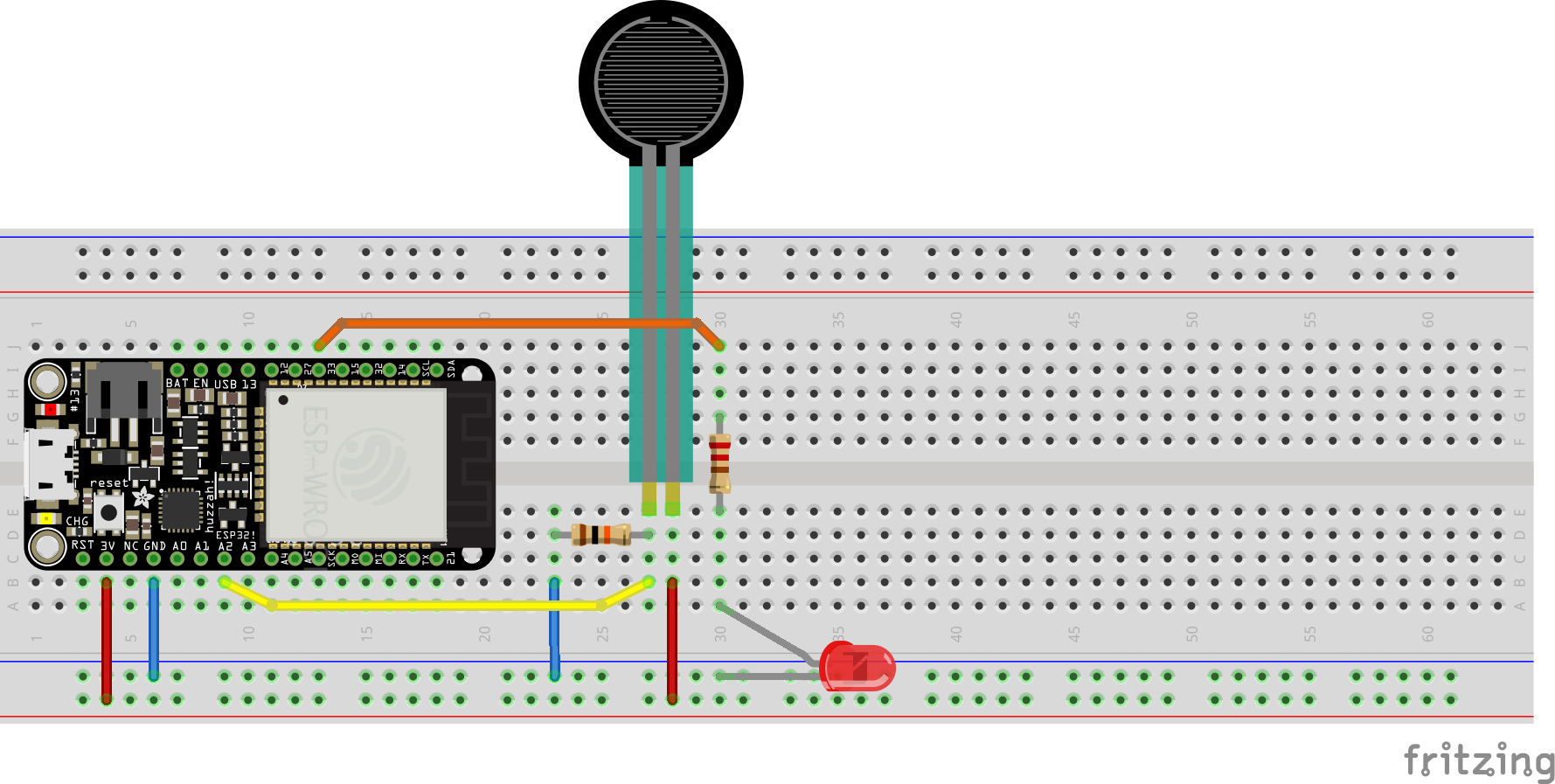analogIn_PWMOut.py
Hookup Pattern

- Connect Sensor Pin3 to
ESP323V - Connect Sensor Pin2 to
ESP3234 - Connect Resistor Pin2 to
ESP32GND - From pin 27, connect the following in series: a Resistor to an
LEDtoGND
Follow along on your ESP32
For Example
# analog in to pwm out
from machine import ADC, Pin, PWM
from time import sleep_ms
ledPin = Pin(33)
potPin = Pin(34)
pot = ADC(potPin)
pot.atten(ADC.ATTN_11DB)
pot.width(ADC.WIDTH_10BIT) # 0 - 1023
pwm = PWM(ledPin, freq=20000, duty=0)
while True:
sensor_val = pot.read()
print(sensor_val)
pwm.duty(sensor_val)
sleep_ms(20)
- note that the analog input, here stored at
sensor_value, is passed topwm.duty(). This allows the sensor value to control the brightness of theLED.
threshold.py
'''
threshold.py
'''
from machine import ADC, Pin
from time import sleep_ms
potPin = Pin(34, Pin.IN)
led = Pin(27, Pin.OUT)
pot = ADC(potPin)
pot.atten(ADC.ATTN_11DB)
pot.width(ADC.WIDTH_10BIT) # 0 - 1023
while True:
sensor_val = pot.read()
if sensor_val >= 512:
print("crossed threshold!")
led.value(1)
else:
led.value(0)
sleep_ms(20)
- above we use a
booleantest to see if thesensor_valis currently greater than or equal to (>=)512(50% of ADC value on pin34). If this test returnsTruetheLEDwill turn on, otherwise it will turn off.